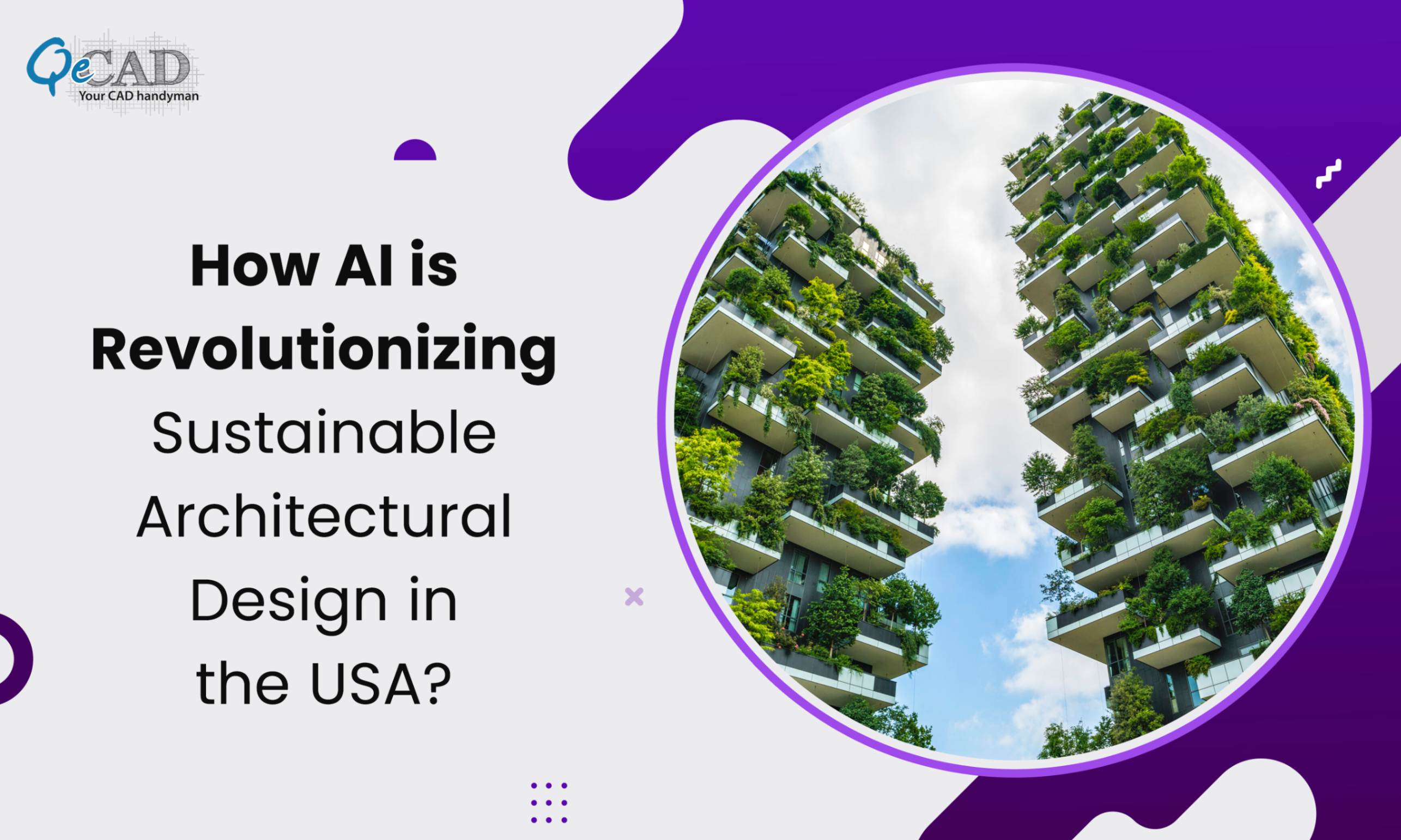
The architecture industry everywhere is undergoing a transformative shift with Artificial Intelligence (AI) emerging as a powerful enabler of the sustainable design and USA is no exception. As the environmental concerns and carbon reduction targets becomes the critical priorities, many architects and engineers are embracing the AI to create an energy-efficient, eco-friendly and cost-effective structures. By combining the advanced technologies like AI with Architectural BIM Services, the AEC firms are redefining the standards of design and construction for a sustainable future.
How AI is Reshaping Sustainable Design?
AI brings together the data analytics, machine learning and predictive modeling to help the architects and engineers in making smarter design decisions. These technologies do enable the real-time simulations, energy optimization along with the exploration of multiple design iterations without involving the extensive manual effort. Whether it’s a residential complex or a commercial skyscraper, AI ensures that the sustainability is integrated at every stage, right from the concept to completion.
Key Applications of AI in Sustainable Architecture
- Design Optimization: AI algorithms process vast amounts of data to suggest the most sustainable and efficient design options. This includes evaluating the building orientation, natural lightings and also the ventilation strategies to minimize the energy usage.
- Energy Analysis & Sustainable Buildings: AI-powered systems can conduct the advanced energy modeling to assess the HVAC loads, lighting needs, insulation efficiency and even the renewable energy integrations. By doing so, the architects can ensure that the buildings do meet the green certifications such as LEED and WELL.
- Smart Material Selection: Selecting appropriate materials is crucial for achieving sustainability objectives. AI tools can recommend the materials with low environmental impact, high durability and cost-effectiveness thereby helping to reduce the construction wastes.
- Urban Planning and Site Analysis: AI can evaluate the environmental data, zoning laws and weather patterns to determine the optimal building locations and layouts for maximum energy savings and reduced carbon footprint.
- Predictive Maintenance and Operations: Beyond the design, the AI systems can help to manage the buildings after the construction by monitoring the performance, predicting the equipment failures and even for optimizing the energy usage in the real time.
Real-World Applications of AI in the USA
Several landmark projects in the USA have successfully integrated AI to drive sustainability:
- The Edge in Seattle: This innovative office building leverages the AI for the real-time energy management. The sensors collects the data on the lighting, HVAC and even on the occupancy thereby allowing the building to adjust the energy use dynamically. This has resulted in the significant energy savings and reduced the operating costs.
- Sidewalk Labs’ Smart District Plans: While primarily a concept, AI-driven designs from Google’s Sidewalk Labs have influenced the urban design thinking in the USA. These initiatives focus on maximizing the energy efficiency, enhancing the green spaces and creating the climate-resilient communities.
- The Bullitt Center in Seattle: Known as the “greenest commercial building around the world,” the Bullitt Center leverages the AI-enhanced building management systems to monitor the energy and water use. Its design focuses on the net-zero energy consumption, solar power integration and also on the smart material usage.
- AI-Enhanced BIM for Healthcare Facilities: In several healthcare projects across the USA, AI integrated with the BIM has helped in designing the sustainable hospitals by simulating the patient flow, energy consumption and ventilation systems for better indoor air quality and reduced energy demands.
These examples demonstrates that the AI is not just a futuristic concept—it’s a present-day reality shaping the way we build and live.
Role of Architectural BIM Services
Architectural BIM Services plays a crucial role in AI-driven sustainable design. BIM platforms create a central repository of the project data, from 3D models to the construction schedules. When paired with AI, BIM allows for the real-time analysis of the energy consumption, daylight optimization and even the cost estimations. This integration ensures fewer design errors, reduces the project delays and aligns the construction with the sustainability goals.
For example, combining BIM with the AI tools can simulate how a building will perform over decades thereby helping the stakeholders to make informed choices that reduces the lifecycle costs as well as the environmental impact.
The Future of Sustainable Architecture in the USA
With the increasing emphasis on the carbon neutrality and net-zero goals, AI is set to become an integral part of the architectural practice in the USA. Government incentives and stricter building codes are encouraging the firms to adopt the technologies that supports the energy efficiency and sustainability. AI tools are likely to evolve further hence incorporating the generative designs, robotics and IoT to create smart, adaptive spaces.
From urban masterplans to the single-family homes, AI-driven design enables the architects to address the climate change challenges head-on. It ensures the resource efficiency, cost reduction and compliance with the environmental standards. By adopting the AI and integrating it with the Architectural BIM Services, the AEC industry can lead the transition to a greener and smarter built environment.
Conclusion
AI is not just enhancing the workflows; it is redefining the way buildings are conceptualized and constructed in the USA. With the ability to optimize the designs, analyze the energy usage and recommend sustainable solutions, AI helps in meeting the growing demands for the eco-conscious architecture.
From projects like the Bullitt Center to AI-enhanced healthcare facilities, the real-world applications of AI are proof that the sustainable architecture is here to stay. For firms looking to stay competitive, investing in AI and BIM technologies is no longer optional but essential for delivering the future-ready, sustainable build.
